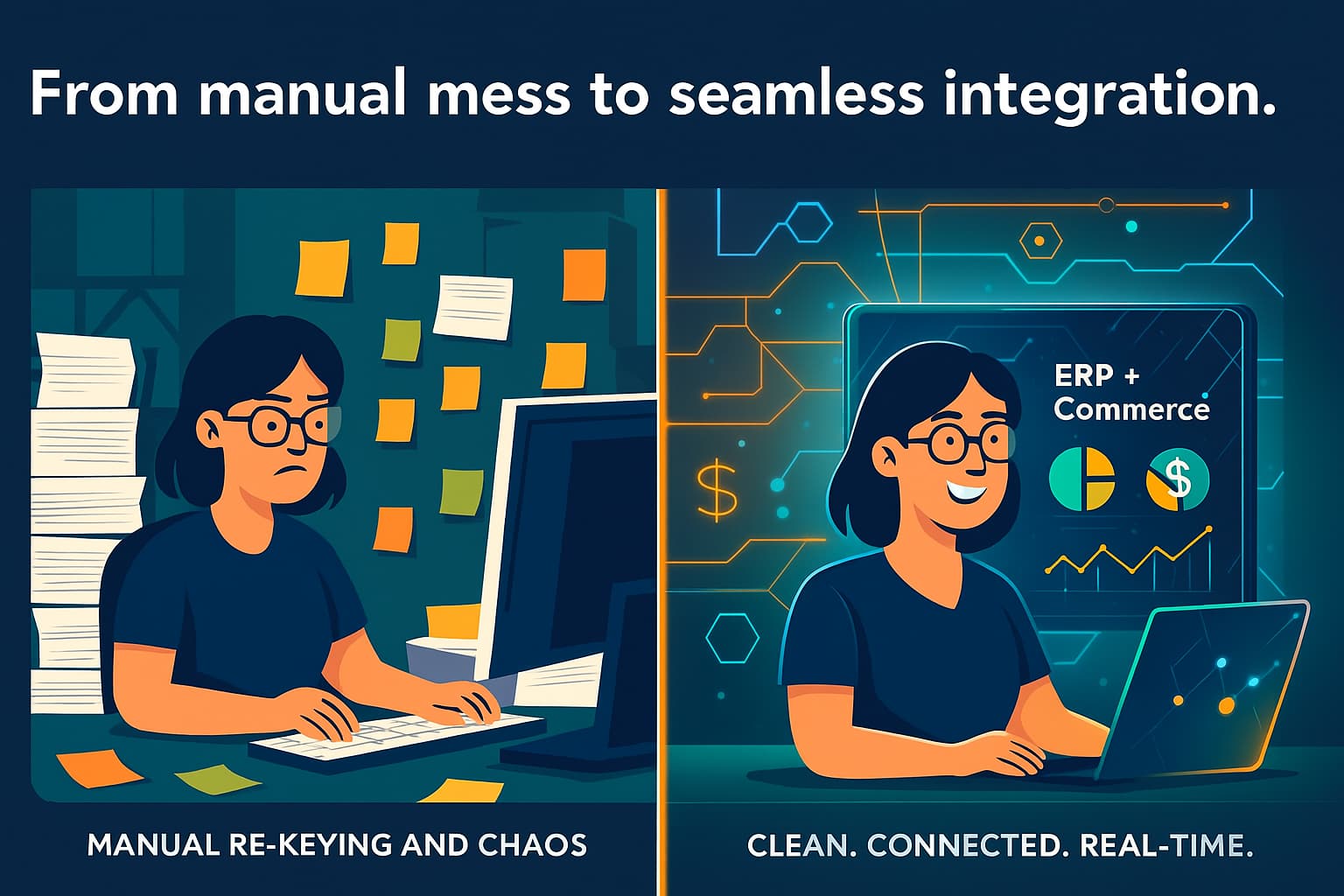
As the economy and supply chains start to realign after the massive product shortages in 2022, a new problem has emerged – excess inventory. This excess inventory directly results from supply chain interruptions and the inability to forecast purchasing behaviors accurately. This caused merchants to purchase large quantities of items based on little to no data to predict high-selling and low-selling products.
In addition to ordering larger quantities, shifts in consumer purchasing are happening because of inflation. Rising food and energy prices cut into discretionary funds for many shoppers. As a result, less is spent on non-essential items like clothing and home goods, and essentials like food, hygiene products, and other items are in higher demand. These and other issues have created the need to offload excess inventory and accurately order new stock.

The Impact Of Excess Inventory
There are multiple reasons excess inventory hurts your business. In addition to the obvious financial loss, warehouse space is taken up that could be used for inventory that is being purchased. Many warehouse operations are impacted by this extra inventory, too. Merchants need help to keep track of inventory and manage operations, leading to inefficiencies throughout the fulfillment and distribution processes.
Beyond the financial losses, having excess inventory may damage your reputation with consumers. Because of the inefficiencies introduced with managing and distributing goods, fulfillment delays and timely shipping lead to customer dissatisfaction. Unhappy customers can have a significant impact on your reputation. They are likelier to talk about a bad experience than a good one. Even if you’ve been affected by supply chain interruptions, customer demands like streamlined purchase processes and timely delivery don’t change.
Ways To Liquidate Inventory
As an ecommerce merchant, no matter what you sell or where, you’ve likely run into issues with excess inventory and needing to liquidate it quickly. You can offload excess inventory in a few ways. Many of these options can be accomplished using your ERP system to connect to multiple sales platforms to accelerate the process.
Liquidation
Excess inventory can be sold to a liquidator at a reduced price. Selling to a liquidator helps you recoup some of your costs and frees up warehouse space. However, this method of eliminating excess inventory may be less profitable because the liquidator will mark up the price to make a profit.
Discounts & Promotions
Offering discounts or running promotions on the inventory can help move the product quickly. You can offer these discounts and promotions on numerous sales channels like:
- Social media
- Amazon, eBay, Walmart, etc.
- Omnichannel market platforms
This is likely one of the most effective and profitable ways to sell your inventory. It’s also a great way to attract new customers and increase brand awareness.
Bundles
Bundling multiple items at a discounted price allows you to move various inventory pieces simultaneously. In addition, when you group complimentary products together, you incentivize sales because customers feel they’re getting more value from the purchase.
Donation
You can give back to the community while getting rid of your inventory. Many community organizations need donations of nearly every kind of product. Plus, you get the tax benefit of writing it off as a charitable contribution!
In the end, how you eliminate excess inventory depends on the products you sell and your business goals. Knowing the options available helps you choose the best approach and avoid the negative impact of holding onto inventory.
Why You Should Use Amazon To Offload Excess Inventory
Amazon is a beast when it comes to selling online and one of the best ways to sell products. But, when you integrate Acumatica ERP into Amazon, you reap the benefits of an ecommerce giant getting products in front of customers ready to purchase while offloading your excess inventory. In addition, with Amazon connected, you see a complete view of your business and make data-driven decisions to help grow and improve operations.
There are several benefits to integrating Acumatica ERP with Amazon to sell overstock inventory and leverage it as a sales channel for all your products.
Improved Inventory Management
You can manage inventory levels across all sales channels and avoid overselling and stockouts, ensuring your customers can always purchase products.
Streamlining Order Management
The integration of Amazon automates order transmission between it and Acumatica, reducing the risk of errors and speeding up fulfillment and delivery times.
Better Financial Management
Get a complete picture of financial performance with real-time data on sales, expenses, and profitability.
Improved Customer Management
Manage customer data with a single view of information like contact details and purchase history across all channels.
Scalability
Scale your business by efficiently managing large volumes of sales and customer data.
Increased Efficiency
Automate manual tasks like data entry and order fulfillment. This automation lets your team focus on essential customer service, support, and sales functions.
Better Visibility
Get a holistic view of your business with real-time data, which in turn, enables you to make informed decisions to grow and improve your ecommerce operations.

As you can see, integrating Amazon with Acumatica helps improve efficiency, scalability, and
Struggling With Excess Inventory? Kensium Has The Solution
Kensium is the preferred ecommerce partner for Acumatica ERP. This partnership means we have the expertise and tools to connect Acumatica to your ecommerce website and enable you to integrate with Amazon for a seamless sales and buying process. In addition, our experts continually create and implement custom integrations to help ecommerce businesses manage their operations, customer data, sales, and profit so critical decisions are made from the most up-to-date information possible.
We’d love to show you how we can help you manage inventory levels, sell to more people in more places, and increase revenue so you can scale your business. Contact us today, chat with one of our Customer Success team members, and learn how Kensium can help you!








.png)














































-small.jpeg)







